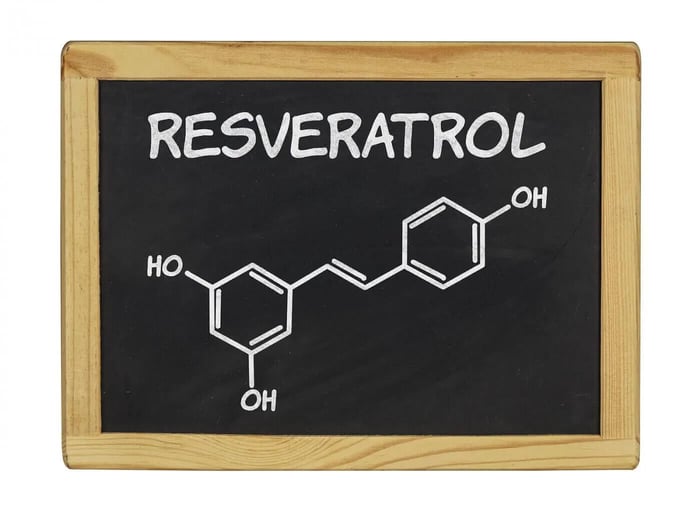How Endurance Exercise Transforms Your Cellular Health: The Science Behind Longer Telomeres
Endurance athletes have long fascinated scientists with their remarkable cellular health markers. Recent groundbreaking research reveals that individuals who engage in endurance exercise possess telomeres that are up to 11% longer than sedentary individuals, potentially unlocking the secret to cellular longevity and enhanced healthspan.
Understanding the Connection Between Endurance Training and Cellular Aging
The relationship between endurance exercise and cellular health represents one of the most exciting discoveries in modern longevity science. While moderate exercise has always been recognized for its cardiovascular benefits, the impact of sustained endurance training on our cellular architecture tells an even more compelling story.
Telomeres, the protective caps at the ends of our chromosomes, serve as biological markers of aging. Every time our cells divide, these telomeres shorten slightly. When they become too short, cells can no longer divide properly, leading to aging and age-related diseases. However, endurance athletes appear to have discovered a natural way to preserve these crucial cellular structures.
The Paradox of Extreme Endurance Exercise
What makes this discovery particularly fascinating is the apparent paradox it presents. Ultra-marathon runners and other extreme endurance athletes subject their bodies to tremendous oxidative stress during training and competition. Conventional wisdom suggests that such stress should accelerate telomere shortening and cellular aging. Yet the opposite appears to be true.
Elite endurance athletes consistently demonstrate superior health markers including:
- Significantly lower LDL cholesterol levels (the harmful type that contributes to heart disease)
- Elevated HDL cholesterol (the protective form that removes excess cholesterol from arteries)
- Optimal body mass index (BMI) despite consuming high-calorie diets
- Reduced inflammatory markers throughout the body
- Enhanced cardiovascular efficiency at rest and during activity
Groundbreaking European Research on Endurance Athletes
A pioneering study conducted by European researchers examined ultra-marathon runners to investigate this paradox. The research team hypothesized that the extreme oxidative stress from ultra-endurance exercise might actually damage telomeres. Their findings shocked the scientific community.
The ultra-marathoners in the study possessed telomeres that were 11% longer than those of sedentary control subjects matched for age and other factors. This discovery suggests that endurance exercise activates powerful protective mechanisms that not only counteract oxidative stress but actually enhance cellular resilience.
The Twin Study: Definitive Proof of Exercise Benefits
Perhaps the most compelling evidence comes from research involving twins. Since twins share nearly identical genetic material, including baseline telomere length, they provide perfect natural experiments. Studies comparing physically active twins with their sedentary siblings revealed that the exercising twins maintained significantly longer telomeres over time.
This twin research eliminates genetic factors as variables, proving that endurance exercise itself drives the beneficial changes in telomere length. The implications are profound: our lifestyle choices can literally influence how quickly or slowly we age at the cellular level.
The Science Behind Endurance Exercise and Telomerase Activation
The mechanism behind these remarkable benefits involves telomerase, an enzyme that can actually rebuild and extend telomeres. Research comparing middle-aged endurance athletes with sedentary individuals of the same age revealed significantly higher telomerase activity in the athletes' blood samples.
This increased telomerase activity appears to be the body's adaptive response to endurance training. Regular sustained exercise triggers a cascade of beneficial cellular processes:
- Enhanced mitochondrial function - The powerhouses of our cells become more efficient
- Improved antioxidant production - Natural defenses against oxidative damage increase
- Optimized cellular repair mechanisms - Damaged components are replaced more effectively
- Increased telomerase expression - The enzyme that maintains telomere length becomes more active
- Better stress response pathways - Cells become more resilient to various stressors
Practical Applications: Building Your Endurance for Longevity
Understanding the science behind endurance exercise and telomere preservation opens exciting possibilities for everyone seeking to optimize their healthspan. You don't need to become an ultra-marathoner to benefit from these discoveries. Research suggests that regular endurance activities can activate similar protective mechanisms.
Progressive Endurance Training Strategies
Building endurance safely and effectively requires a thoughtful approach. Start with activities that elevate your heart rate for extended periods while remaining sustainable:
- Brisk walking - Begin with 30-minute sessions and gradually increase duration
- Swimming - Low-impact full-body endurance exercise ideal for all fitness levels
- Cycling - Build leg strength while developing cardiovascular endurance
- Dancing - Combines endurance training with coordination and social interaction
- Hiking - Progressive terrain challenges enhance both strength and endurance
The Optimal Endurance Exercise Prescription
Research indicates that the sweet spot for telomere benefits occurs with consistent moderate to vigorous endurance exercise. Aim for:
- 150-300 minutes per week of moderate-intensity endurance activity
- 75-150 minutes per week of vigorous-intensity endurance exercise
- A combination of both for optimal results
- Progressive overload - Gradually increase duration and intensity
- Recovery periods - Allow adaptation between challenging sessions
Beyond Physical Benefits: The Mental and Emotional Rewards of Endurance Training
The benefits of endurance exercise extend far beyond telomere preservation. Regular endurance training transforms multiple aspects of health and wellbeing:
Cognitive Enhancement Through Endurance Exercise
Endurance activities increase blood flow to the brain, promoting neuroplasticity and cognitive function. Studies show that individuals who maintain regular endurance exercise routines experience:
- Improved memory formation and recall
- Enhanced problem-solving abilities
- Better emotional regulation
- Reduced risk of cognitive decline
- Increased creativity and mental clarity
Emotional Resilience and Endurance
The mental fortitude developed through endurance training translates into greater emotional resilience in daily life. As you push through physical challenges, you build psychological strength that serves you in all areas.
Nutrition Strategies to Support Endurance and Telomere Health
Optimizing your endurance training results requires proper nutritional support. Foods rich in antioxidants complement the telomere-protective effects of exercise:
- Colorful vegetables and fruits - Provide polyphenols and vitamins
- Omega-3 fatty acids - Found in fish, walnuts, and flaxseeds
- Green tea - Contains EGCG, a powerful telomere-protective compound
- Whole grains - Supply sustained energy for endurance activities
- Lean proteins - Support muscle recovery and adaptation
Common Misconceptions About Endurance Exercise and Aging
Several myths persist about endurance exercise that may prevent people from experiencing its benefits:
Myth 1: Extreme Exercise Always Causes Harm
While excessive training without proper recovery can be detrimental, research shows that well-planned endurance programs enhance rather than harm cellular health. The key lies in progressive adaptation and listening to your body.
Myth 2: It's Too Late to Start
Studies demonstrate that beginning an endurance exercise program at any age yields benefits. Middle-aged and older adults who start regular endurance training show significant improvements in telomerase activity and overall health markers.
Myth 3: Only Elite Athletes Benefit
The telomere-preserving effects of endurance exercise occur across all fitness levels. Consistency matters more than intensity for most health benefits.
Creating Your Personal Endurance Journey
Embarking on an endurance training program represents an investment in your cellular health and longevity. Start where you are, progress gradually, and celebrate each milestone. Remember that every step, every pedal stroke, and every lap contributes to preserving your telomeres and enhancing your healthspan.
The science is clear: endurance exercise offers a natural, accessible path to cellular rejuvenation. By understanding and applying these principles, you can harness the power of movement to support healthy aging at the deepest biological level.
Frequently Asked Questions About Endurance Exercise and Telomeres
What exactly are telomeres and why do they matter for endurance athletes?
Telomeres are protective DNA sequences at the ends of chromosomes that act like plastic tips on shoelaces, preventing genetic material from fraying or sticking together. For endurance athletes, telomeres matter because they serve as biological markers of cellular aging. Longer telomeres are associated with better cellular health, improved recovery, and potentially longer healthspan. Research shows that endurance exercise can actually preserve and even lengthen telomeres through increased telomerase enzyme activity.
How much endurance exercise is needed to see telomere benefits?
Research suggests that consistent moderate to vigorous endurance exercise provides telomere benefits. The optimal amount appears to be 150-300 minutes per week of moderate-intensity endurance activity (like brisk walking or easy cycling) or 75-150 minutes of vigorous-intensity exercise (like running or swimming laps). The key is consistency rather than extreme intensity. Even starting with 30 minutes of endurance activity three times per week can initiate positive cellular changes.
Can beginners experience the same telomere benefits as elite endurance athletes?
Absolutely! While elite endurance athletes show the most dramatic telomere preservation, research demonstrates that people at all fitness levels can experience significant benefits. Studies on previously sedentary individuals who begin endurance training programs show increased telomerase activity and telomere preservation within months. The magnitude of benefit relates more to consistency and progression than to elite performance levels.
What types of endurance exercise are most effective for telomere health?
Various forms of endurance exercise benefit telomere health, including running, cycling, swimming, rowing, and cross-country skiing. The most effective approach combines aerobic endurance activities that elevate heart rate for sustained periods. Research particularly highlights the benefits of activities that engage large muscle groups and can be maintained for 30 minutes or more. The best endurance exercise is ultimately the one you enjoy and will perform consistently.
How does endurance exercise overcome the oxidative stress that should damage telomeres?
This fascinating paradox occurs because endurance exercise triggers adaptive responses that ultimately protect telomeres. While acute exercise does create oxidative stress, regular endurance training upregulates the body's antioxidant systems, enhances mitochondrial function, and increases telomerase enzyme production. These adaptations not only neutralize exercise-induced stress but create a net positive effect on cellular health. The body essentially becomes more efficient at managing oxidative stress through endurance training.
At what age should someone start focusing on endurance exercise for telomere health?
It's never too early or too late to begin endurance exercise for telomere health. While starting younger allows for greater cumulative benefits, studies show that individuals beginning endurance programs in their 40s, 50s, 60s, and beyond still experience significant telomere preservation and lengthening. The telomerase enzyme responds to exercise stimulation at any age, making endurance training a valuable intervention throughout the lifespan.
How long does it take to see telomere benefits from endurance exercise?
Research indicates that telomerase activity can increase within weeks of beginning regular endurance exercise. However, measurable changes in telomere length typically require several months of consistent training. Studies show significant improvements after 6 months of regular endurance exercise, with continued benefits accumulating over years. The timeline varies based on individual factors, training intensity, and baseline fitness, but positive cellular changes begin almost immediately.
Can endurance exercise reverse existing telomere shortening?
Remarkably, research suggests that endurance exercise can not only preserve but potentially lengthen telomeres through increased telomerase activity. While complete reversal of decades of telomere shortening may not be realistic, studies show that consistent endurance training can add length to telomeres, effectively turning back the cellular clock. This represents one of the few proven interventions capable of positively influencing this fundamental aspect of cellular aging.
What should I eat to support telomere health during endurance training?
Supporting telomere health during endurance training requires a nutrient-rich diet emphasizing antioxidants and anti-inflammatory foods. Focus on colorful fruits and vegetables, omega-3 rich fish, nuts, seeds, and whole grains. Green tea, berries, and leafy greens provide particularly powerful telomere-protective compounds. Adequate protein supports recovery from endurance sessions, while staying hydrated optimizes cellular function. Avoid excessive processed foods and sugar, which can promote inflammation and telomere damage.
Is there such a thing as too much endurance exercise for telomere health?
While extreme endurance athletes show longer telomeres, there may be a point of diminishing returns. Overtraining without adequate recovery can increase inflammation and stress hormones, potentially negating some benefits. The key is finding your personal endurance sweet spot - challenging enough to stimulate adaptation but not so extreme that it overwhelms recovery capacity. Most research suggests that moderate to vigorous endurance exercise provides optimal telomere benefits without the risks associated with extreme training volumes.
References:






